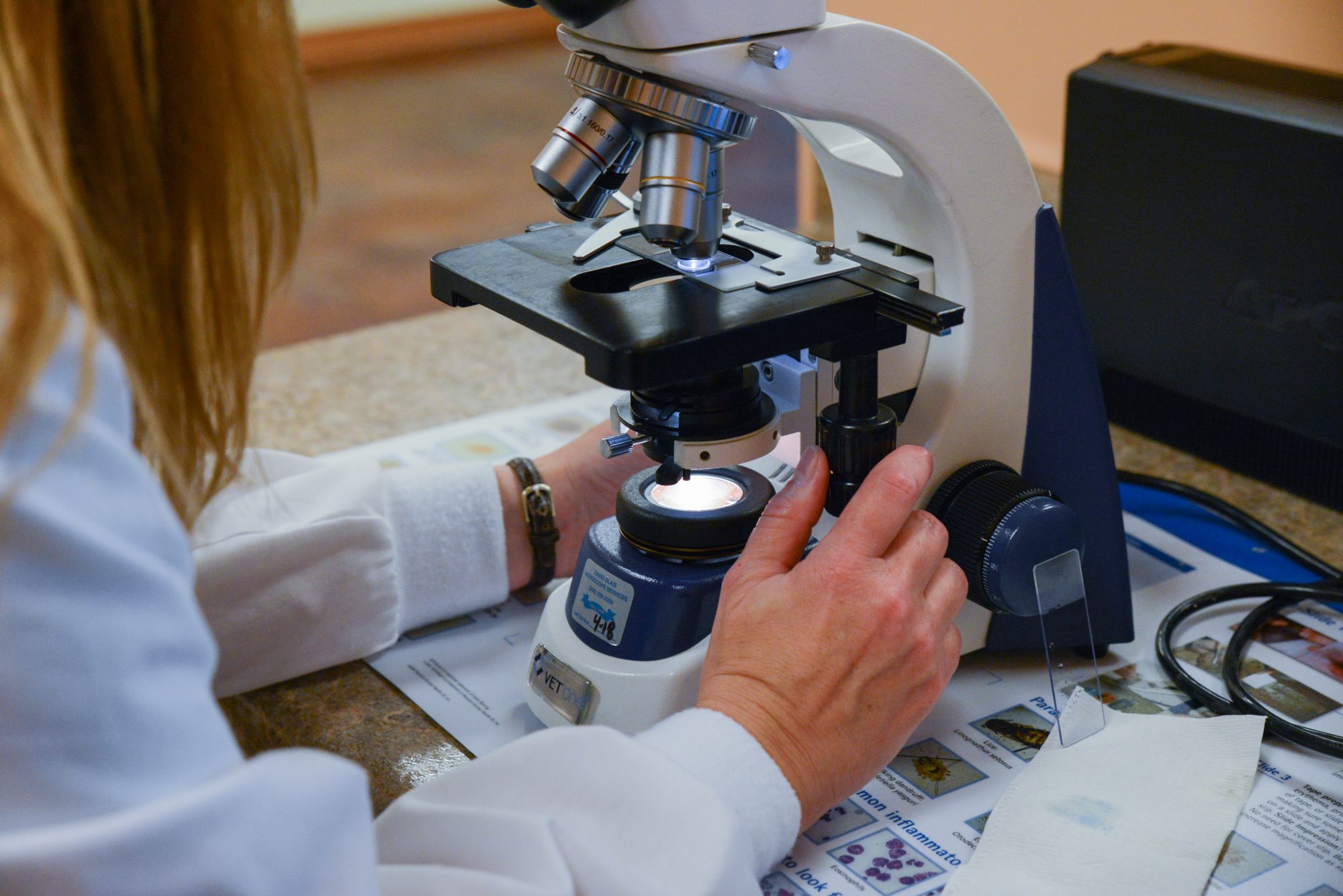Skin Tumors In Pets
By Dr. Maria Krenz, DVM – ZimmVet-763-856-4848

Common Skin Tumors in Pets
Lumps and bumps are common occurrences among pets. Once a lump or bump is found, the main goal is to determine if the mass is malignant (cancerous) or benign (non-cancerous), and if it needs to be surgically removed. In order to make this determination, a sample with a needle is taken by a veterinarian and evaluated under a microscope, or the mass can be surgically removed and tissue can be evaluated. Visiting your veterinarian, as soon as a tumor is found, is the best course of action.
Tumors of Young Pets
If a young pet has a tumor, the veterinarian will perform a physical evaluation of the mass. In this case, if the history and appearance fit the symptoms, masses are not always sampled, but may still be removed. Here are a few examples of benign lumps or bumps.
Papilloma (Wart) is a benign tumor caused by a virus. It is more commonly found in young pets with an immature immune system or pets on immune suppressive medication. It usually occurs around the lips. Papillomas usually look white and are raised like a cauliflower. The virus is spread between dogs and can happen from contact during daycare or at a dog park. A papilloma can go away on its own and does not need treatment, but it can be surgically removed if a problem. There is an oral medication that may help regress papillomas.
Histiocytoma: This type of tumor develops rapidly and is raised and ulcerated. It is considered a benign tumor. Again mostly affecting young dogs this type of mass can regress and go away on its own without treatment. It may take months to go away and can be itchy, so sometimes owners opt to have the mass removed.
Tumors of Senior Pets
Lipomas are one of the most common tumors found on senior pets. It is a benign tumor of the fat layer, which are felt as a soft round growth under the skin layer. They are often slow growing; however, they can grow to be very large in size. Even though this is a non-cancerous tumor, it is best to confirm this by sampling with a needle and evaluating the cells under the microscope. Since this mass is benign once sampled the size and growth can be monitored. Surgical removal is best before the tumor is too large and difficult to remove.
Mammary Tumors: Dogs and cats can get cancer of the breast, just like people. Any tumor in the mammary (breast) region of the pet, should be removed and tested. Unfortunately a needle sample is usually not enough to tell if the mass is cancerous so the mass should be completely removed and tested, or a biopsy can be taken. In dogs, 50% of mammary tumors are malignant (cancerous). In cats, 90% of mammary tumors are malignant (cancerous). If the pet was spayed after they had heat cycles the chance of a tumor developing is a lot higher (25%). The earlier the tumor is removed (and smaller the size), the better the prognosis for cure.
Mast cell tumors can have many different appearances. They can be raised and nodular, or flat and irregular shaped. They are often hairless and darker colored. They are considered cancerous, but have different grades and levels of malignancy. The lowest grade tumor is cured with surgical removal. A needle sample is used to diagnose Mast cell tumors.
Disclaimer: This written content is meant to be educational and is not medical advice. Always consult a veterinarian about medical advice for your pet.


